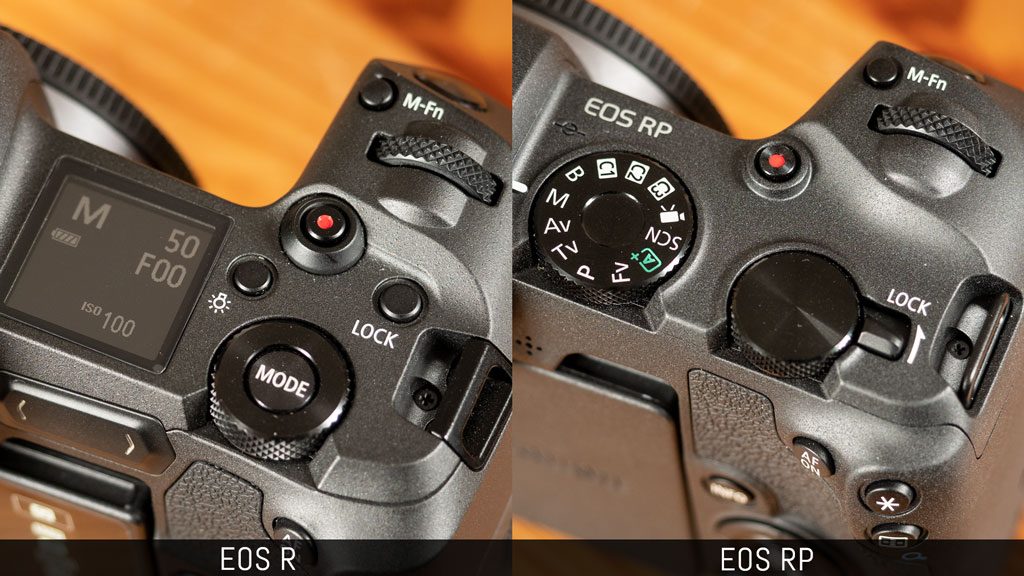

First, their design makes them much better suited to the constant 'live view' required for video capture. Mirrorless cameras have a considerable advantage when it comes to video, and that's why they comprise the best filmmaking cameras and the best hybrid cameras. The true exception comes in the form of the best Micro Four Thirds cameras, from OM System and Panasonic, whose sensors are so compact that both the bodies and lenses are more compact than any DSLR equivalent.

Some mirrorless makers have produced small or retracting lenses that do offer a size saving, but when lens makers produce mirrorless lenses to match the specifications and performance of DSLR lenses, they end up pretty much the same size. The Canon RF 28-70mm F/2L USM is a remarkable mirrorless lens, but just look at the size of it! (Image credit: Future / Matthew Richards) Nikon's new 'baby' DX mirrorless cameras, the Nikon Z50, and Nikon Z fc, still have only a handful of native APS-C lenses.įujifilm and OM System (formerly Olympus) also had time to develop their own native lens systems, to the degree that none of the mirrorless camera brands is now at any real disadvantage regarding lens choice (indeed, the best Micro Four Thirds lenses rival any DSLR range). And the best Canon RF lenses and best Nikon Z lenses are maturing at an incredible pace, offering almost every optic you could ask for.

From day one, both produced a mount adaptor to use almost every current DSLR lens without restriction. Nikon and Canon have been especially clever with their new full-frame mirrorless cameras. It hasn’t taken Sony long to assemble an impressive range of lenses for its full-frame FE-mount mirrorless cameras (see our list of the best Sony lenses), and Panasonic has been smart enough to enter into an L-Mount Alliance with Sigma and Leica to generate a large and ever-growing lens range (see our guide to the best L-mount lenses). Nikon and Canon DSLRs still have the largest lens systems, but mirrorless makers like Fujifilm, Sony, OM System and Panasonic are hot on their heels, and almost match the range available – and often with more modern lens designs (Image credit: Sony) There is unavoidable screen blackout in the camera’s burst shooting mode, as the mirror flips up and down between exposures, but this is rarely an issue – the key point is that there is no lag, and it’s much easier to follow a fast-moving subject with a high-speed DSLR like the Nikon D500 than it is with the average mirrorless camera. Optical viewfinders typically have an advantage here that’s particularly relevant for sports and action photographers. Viewfinder lag is less of an issue than it used to be, thanks to faster refresh rates, and the most recent area of focus for manufacturers has been in the blackout effect you would typically see when shooting continuous bursts of images. However, they can still suffer from lag, or 'latency' – a tiny delay between what the camera sees and what the screen shows. The latest and best electronic viewfinders available today (such as the Sony A1's 9.44 million dots and 240fps refresh rate) have such high resolution that you can hardly see the dots and they have a clarity that genuinely approaches optical viewfinders.
CANON EOS R VS CANON EOS 5D MARK IV FULL
Need further details? Below you will find a full comparison of all the technical specifications.High-quality electronic viewfinders are now found on many mirrorless cameras – and what you see in the viewfinder is exactly what you would see in live view on the rear screen. Thus, below you'll find our suggestions, based on your preferred photography genre:Ĭanon EOS 5DS R is better for portrait or landscape photography Canon EOS 5D Mark IV is instead your choice if you shoot sport or street photography or for everyday use. This is the reason why the iCamRank "weights" differently the camera technical features for each type of photography.

The handling of Canon EOS 5D Mark IV (60) is more effective than that of Canon EOS 5DS R (49).īut, as you may know, the technical performance is meaningless if applied to the wrong context.Canon EOS 5D Mark IV is more versatile than Canon EOS 5DS R (87 a 79).Canon EOS 5D Mark IV (55) performs better than Canon EOS 5DS R (52) in terms of speed.The image quality of Canon EOS 5DS R (71) is superior to that of Canon EOS 5D Mark IV (67).Technically speaking, Canon EOS 5D Mark IV is superior to Canon EOS 5DS R, with an overall iCamRank score of 67 and 64, respectively.Here you will find listed all the main differences among Canon EOS 5DS R and Canon EOS 5D Mark IV, calculated by the CameraRace iCamRank algorithm. In case you are wondering which of these cameras you should buy, then this is the right place to find an answer.


 0 kommentar(er)
0 kommentar(er)
